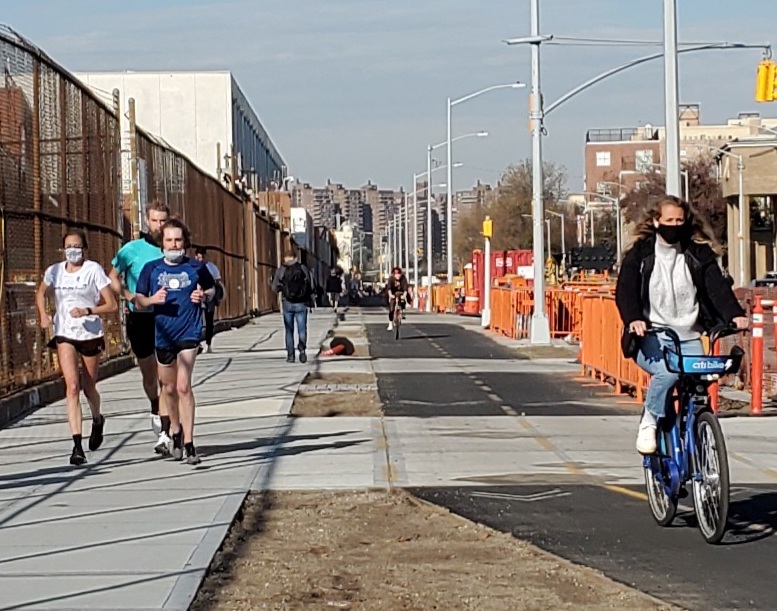The Bike Boom Continues — Cycling Triples on the Brooklyn Waterfront Greenway


The proof is in the numbers — again!
Cycling skyrocketed along Brooklyn’s popular waterfront greenway during the COVID-19 pandemic, data show — strengthening the call for the de Blasio administration to finally finish the long-delayed waterfront pathway now, and immediately build out better, safer bike infrastructure throughout the five boroughs.
The latest numbers come one day after Streetsblog reported this year’s large rise in the number of cyclists pedaling over the city’s East River bridges.
From May through November this year, 799,463 cyclists tripped the counter on the Brooklyn Waterfront Greenway near Williamsburg Street West — 551,623 more than during the same period in 2019, or an increase of 222 percent, according to numbers provided by the Brooklyn Greenway Initiative.

Pedestrian use of the pathway is also booming. Since May, 286,536 people have walked some portion of the route, compared to 179,639 during the same time period last year, an increase of almost 60 percent, with the total number of people biking and walking so far in 2020 clocking in at more than 1.3 million — more than double the numbers from in 2019, according to BGI.
The massive spike follows a letter the Brooklyn Greenway Initiative sent to Mayor de Blasio, along with 11 local pols, in May urging the city to fill the gaping hole in the borough’s protected bike network as cycling was beginning to surge. The Brooklyn waterfront greenway will eventually run 26 miles between Queens and Sunset Park — but much of it been stalled for years, despite being fully funded.
“Capital funding is secured and construction was scheduled for groundbreaking this spring,” Carta said at the time. “But with a need to get our city moving again now — not to mention any potential delays with capital projects due to the pandemic — New Yorkers do not have time for the two-year capital construction.”
In 2005, the federal government allocated $14.6 million to build the greenway. But 15 years later, large swaths of the safe route have yet to be built, particularly in some of its more deadly sections, like in Sunset Park, leaving pedestrians and cyclists, especially delivery workers, as vulnerable as ever.
“Greenway implementation is maddeningly slow but continues. Yet, much more investment and a focus on quick-build projects are needed, now. The biggest Brooklyn Greenway gaps remain in marginalized and/or communities of color,” said Carta, referring to gaps in the greenway in Vinegar Hill, Red Hook, Sunset Park, Gravesend and Sheepshead Bay. “These neighborhoods are also ill-served by transit and are burdened by higher than average bike and pedestrian crashes. Clearly, Brooklynites are using the Greenway at record-breaking rates and we need the full route implemented now.”
DOT told Streetsblog in October that all the funding has now been allocated towards the project, but that work was delayed due to “several funding and design issues, as well as delays related to COVID-19.”
Not good enough, said Jon Orcutt, a former DOT official who is with Bike New York.
“This year has ended any argument about whether New Yorkers will ride bikes in large numbers. The huge greenway numbers are just another data point here,” he said. “With a much better connected network of safe places to ride, the trend could go much further.”





